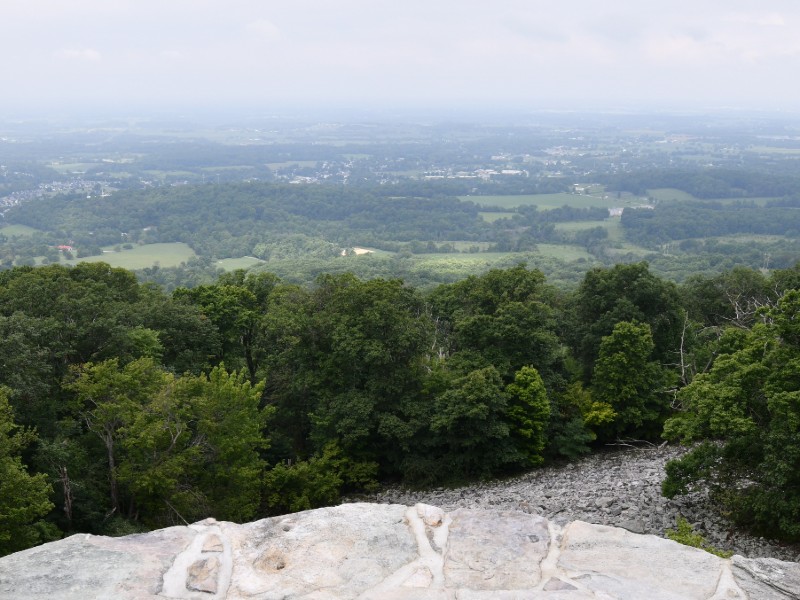As a part of Preservation Maryland’s Battlefield Preservation Campaign, the organization selected two consultants to lead projects in western and southern Maryland.
south mountain battlefield project expands
Frederick & Washington Counties
On the South Mountain Battlefield (1862), which straddles Frederick and Washington counties, Preservation Maryland has dedicated several years’ worth of effort toward improving the preservation, interpretation, and understanding of the unique, mountainous battlefield. To date, that has included the completion of the first in-depth study and public consensus plan for the future preservation and interpretation of the battlefield. That report was completed and published in late 2019 and included several key findings and recommendations.
Immediately following the publication of that report, Preservation Maryland partnered with the Maryland State Highway Administration to launch an in-depth archaeological study of Crampton and Fox’s gap on the battlefield – with the results of that study to be published in early 2021. Additionally, the organization supported the stabilization of the Shafer Farm, the battlefield headquarters at Crampton’s Gap of Union General William B. Franklin, and advocated for a $100,000 grant to support the rehabilitation of the site. With the continued support of the American Battlefield Protection Program, Preservation Maryland will now lead a re-branding effort for the battlefield, one of the key recommendations, to visually define the area and confusing terrain as a historic battlefield and to help orient visitors and create a seamless visitor experience.
Out of dozens of interested consultants, Communication Design Inc., a design firm based out of Richmond, Virginia, with extensive experience in heritage and preservation and which also branded Civil War Trails, was selected to lead the effort on behalf of Preservation Maryland in close coordination with key stakeholders, including the Maryland Department of Natural Resources and local and state organizations.
Maryland’s largest revolutionary war battle: St. George Island
St. Mary’s County
At the confluence of the St. Mary’s River and Potomac River at the far southern end of St. Mary’s County sits St. George Island – today a quiet residential community that was once the site of Maryland’s largest revolutionary war battle. Fought on July 17, 1776, the battle pitted British forces under the command of John Murray, 4th Earl of Dunmore against Maryland’s Flying Camp militia under the command of Captain Rezin Beall. Dunmore had only recently escaped by ship from Williamsburg, Virginia, and attempted to land on the mainland of Maryland. Beall was wounded in action in this battle, repulsed the invading British which prevented the invasion of the mainland.
To date, very little professional study has been dedicated to this battle. The exact site has not been located and existing documentation, context, and mapping has not been compiled. This planning project will mark the first step towards documentation, engaging and building consensus with the public and local landowners, and perhaps eventually interpreting this little known but important site’s revolutionary war history and pre-European contact history. [Note: The study does not fund land acquisition nor is any contemplated – it is a research endeavor that will also explore low-impact interpretive opportunities.]
Out of many interested respondents to Preservation Maryland’s RFP, Kennon Williams Landscape Studio was selected as the lead consultant to be supported in the project by two sub-consultants; the Washington College Center for Environment and Society and Barton Ross & Partners, LLC Architects.
Our Maryland Historic Battlefield Campaign
Both projects, as well as the recently completed report at Fort Tonoloway and ongoing planning and research at Falling Waters Battlefield are a part of Preservation Maryland’s growing portfolio of battlefield preservation projects comprising a new program. Today, the program is gaining traction and building capacity to support the preservation of these sites across the state and to inform and encourage broad and diverse interpretation of the many people who were impacted by the battles – from the soldiers to the enslaved.
To make a gift to our battlefield preservation program CLICK here

